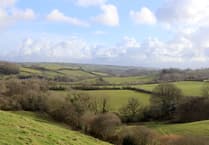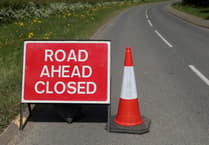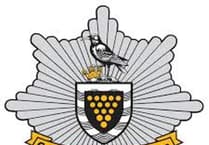A NEW theory has emerged, which claims that a character in an iconic Charles Dickens novel is based on a doctor the author met in London, who is buried at St Endellion.
Whether or not you are a fan of the Victorian author’s work, most will be familiar with A Christmas Carol, telling the tale of Ebenezer Scrooge, and the visits of four ghosts on Christmas Day that guide him into becoming a kinder and more charitable man.
Along the way, readers are introduced to the Ghosts of Christmas Past, Christmas Present and Christmas Yet to Come, but it is the first ghost of Scrooge’s Christmas night that triggers the story — that of his dead business partner, Jacob Marley.
Jacob is an unfortunate spirit who is forced to carry the heavy weights and chains of guilt along with him for all eternity after living his life as an uncharitable, selfish and greedy man. His visit to Scrooge comes as a warning to him to change his ways, before he too meets a grisly afterlife.
Before Christmas, a new theory about the story was put forward by Cornish historian, Barry West, from St Austell, who takes a particular interest in the county’s history. He believes that the character of Jacob Marley was inspired by Dickens’ friendship with a doctor from London, who later lived in Cornwall, died in Port Isaac and is buried in St Endellion churchyard — Dr Miles Marley.
Barry has been researching Charles Dickens’ connections with Dr Miles Marley for five years, having found out some details about this doctor during a trip to Padstow, where he ate at the Pickwick Inn nearby.
It was here that he first made connections between Dickens and Cornwall, with the menu detailing the author’s time spent in Padstow in the 1840s, having penned A Christmas Carol after his visit, with the wide belief that the story was based on his time spent in the county and his friend, Dr Miles Marley.
Barry said: “I’ve been looking into this for about five years, so it’s been a long time. I’ve got lots of research projects going on, but this has been an ongoing thing. I’ve been able to get in touch with the Dickens Society, so that’s been great, but Padstow was where it all started really, after I found some information on the connections with the area.”
Having found a possible connection between Jacob Marley and Dickens’ friend in Dr Marley, it confirmed a lot for Barry.
“I was quite excited,” he continued. “I’m a Cornish researcher, so I am always keen to promote Cornwall and share stories from Cornwall with people. But with something as significant as this, I really wanted to share it with a big audience.”
Barry said: “I know that Marley met Dickens whilst based in Cork Street in London. They dined together at a St Patrick’s Day celebration, where Dickens had commented on how ‘Marley’ was an unusual name. He told him there that he would make his name a ‘household word’ before the new year — that’s how it all started.”
Indeed, such correspondence has been noted. During his research, Barry found a newspaper clipping claiming that a Miss M Lloyd had written to The Daily Telegraph and had ‘provided an interesting account of the origin of the name Marley’.
Miss Lloyd had stated that her grandfather was Dr Miles Marley, of Cork Street, London, and had thrown a dinner party on St Patrick’s Day one year, at which Dickens was a guest.
The clipping states: “During dinner, the subject of strange surnames came up, and Dr Marley said he thought his name was a most uncommon one, whereupon Dickens said: ‘Your name shall be a household word before the year is out.’”
A Christmas Carol was published in December 1843, with the eerie words of the ghost of Jacob Marley being uttered to this day, making the story one of the world’s most popular Christmas tales: ‘“I wear the chain I forged in life,” replied the Ghost. “I made it link by link, and yard by yard; I girded it on of my own free will, and of my own free will I wore it. Is its pattern strange to you?”’
Dr Marley later made the move to Cornwall towards the end of his life. His son, Frederick Marley, lived in Padstow. Also a doctor, Frederick practiced in Padstow for 51 years and died in St Issey on January 27, 1908.
Barry researches Cornish history and influential individuals as a hobby. He said: “Anything that’s got a Cornish theme or background — whether it’s an artist, a poet or a writer — I will look into it.”
It is believed that Dickens spent time in remote areas such as Tintagel, Rock and Land’s End. Tintagel man, David Flower, claimed that Dickens had spent some time in the area. Barry is certain that details of a lighthouse and coastal scenes depicted in A Christmas Carol — during which Scrooge is taken to see how sailors and lighthouse keepers stay positive at Christmas whilst away from their families and homes — are based on that of Land’s End’s Longships Lighthouse, as well as the coastline of Tintagel and Rock.
He said: “In regards to the lighthouse, there’s lots of theories of where the lighthouse is based in the story. There’s no shadow of a doubt, in my mind, that the lighthouse is actually Longships Lighthouse in Land’s End. We know from the time of which he (Dickens) visited and how far from land this lighthouse is, that it must be this one, in my opinion.
“Many people think it could be Trevose lighthouse, but we know that Trevose lighthouse was built on land, and only concluded that the time in which Dickens went to Cornwall and how far from land the lighthouse is, creates no shadow of a doubt that it’s Longships Lighthouse. It’s great for the people of Cornwall to see what this lighthouse actually looks like, and how Dickens would have seen it!”
The Linnean Society of London has also confirmed with Barry that Dr Miles Marley was a fellow of the Linnean Society from February 16, 1830, until May 17, 1848. He was nominated as a fellow by T Bell, E T Bennett, N A Vigors, W Yarrell and G Such. The society’s headquarters, Burlington House, is based very nearby to Cork Street, where Dr Marley practiced.
Recent correspondence has also come to light, signalling that a Miles Marley from Port Isaac was due to deliver a talk to the Bodmin Literary Institution on the topic of ‘Russia and the Greek Church’ on November 28, 1854, as reported in the Royal Cornwall Gazette on November 10 of that year.
“We know he was going to go and do that, but there are no historical records of any meetings taking place,” Barry continued. “I couldn’t get any records, but we now know that he died before the date of the lecture. It’s an interesting one, and for the people of Cornwall it’s a story that’s been untold.”
Miles Marley died on November 15, 1854, aged 57, and was buried on November 20 at St Endellion Church.
Barry has also spent time with members of Dr Marley’s relatives, who travelled to Cornwall from Australia recently. He added: “I met members of his family from Australia. We went to the White Hart Hotel in St Austell and shared stories.”
-Do you have any records or information relating to this story? Get in touch by emailing [email protected]




